

The Story of An Hour - Study Guide
Kate Chopin 's The Story of An Hour (1894) is considered one of the finest pieces of Feminist Literature. We hope that our study guide is particularly useful for teachers and students to get the most from the story and appreciate its boldness shaking up the literary community of its time.
Here's the story: The Story of An Hour , Character Analysis & Summary , Genre & Themes , Historical Context , Quotes , Discussion Questions , Useful Links , and Notes/Teacher Comments
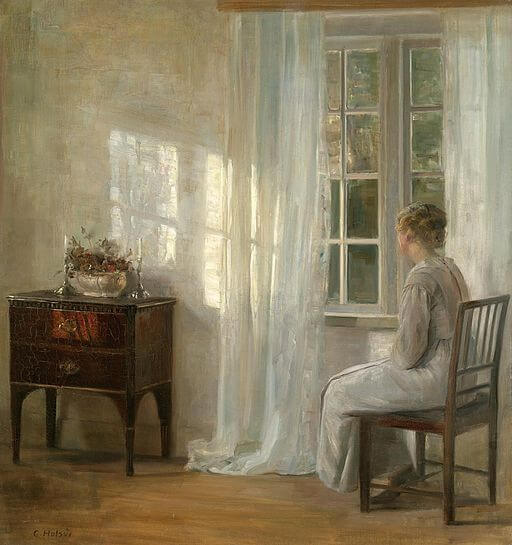
Character Analysis & Summary
Plot Summary : Chopin basically summarizes the external events of the story in the first sentence: "Knowing that Mrs. Mallard was afflicted with a heart trouble, great care was taken to break to her as gently as possible the news of her husband's death."

Genre & Themes
Challenge Social Conventions : Rather than conform to what's expected, honor your own needs. Just because it's the way it's always been, doesn't mean it has to continue at your expense.
Situational Irony : Life's a bitch-- just when you think you're free from obligation, you go and die yourself, which kind of makes liberation a bit pointless. Chopin's story is a great example of the literary device called situational irony .

Historical Context
Feminist literature, both fiction and non-fiction, supports feminist goals for the equal rights of women in their economic, social, civic, and political status relative to men. Such literature dates back to the 15th century (The Tale of Joan of Arc by Christine de Pisan), Mary Wollstonecraft in the 18th century, Virginia Woolf , Elizabeth Cady Stanton , Florence Nightingale , Elizabeth Perkins Gilman , and Louisa May Alcott . Kate Chopin 's best known novel, The Awakening (1899) and Mary E. Wilkins Freeman 's A New England Nun (1891) led the emerging modern feminist literary movement into the 20th century, during which women earned the right to vote, fought for economic, social, political, educational, and reproductive rights with Gloria Steinem and the Women's Liberation Movement. The 21st century has brought a resurgence of interest in Margaret Atwood 's The Handmaid's Tale with a new streaming video series , and the Women's March After President Trump's Inauguration (2017) drew more than a million protesters in cities throughout the country and world.
It's helpful to know the list of grievances and demands a group of activitists (mostly women) published in The Declaration of Sentiments in 1848. Principal author and first women's conference organizer was Elizabeth Cady Stanton , with high-profile support from abolitionist Frederick Douglass . Many more struggles and attempts to change public opinion followed the conference; it took 72 more years for women to secure the right to vote.
A brief History of Feminism

“Knowing that Mrs. Mallard was afflicted with a heart trouble, great care was taken to break to her as gently as possible the news of her husband's death."
“She did not hear the story as many women have heard the same, with a paralyzed inability to accept its significance."
“When the storm of grief had spent itself she went away to her room alone. She would have no one follow her."
“She was beginning to recognize this thing that was approaching to possess her, and she was striving to beat it back with her will--as powerless as her two white slender hands would have been."
"'Free, free, free!'' The vacant stare and the look of terror that had followed it went from her eyes. They stayed keen and bright."
"What could love, the unsolved mystery, count for in the face of this possession of self-assertion which she suddenly recognized as the strongest impulse of her being!"
"When the doctors came they said she had died of heart disease--of the joy that kills."

Discussion Questions
9. Elaborate on Chopin's uses of irony: 1) Situational Irony : when she gets her freedom, she dies anyway 2) Verbal irony : What is said explicitly is much different than the text's inferences (thinking rather than saying). Reacting to news of a spouse's death with relief, nevermind "monstrous joy" is an "inappropriate" response, for sure. She keeps these thoughts in her head (whispering her chant), with the door closed.
10. Discuss the concept of repression and Chopin's assertion of her real cause of death: "the joy that kills."
11. Read Chopin's allegory about freedom from a cage, her short-short story, Emancipation: A Life Fable . Compare its theme, tone, symbols, and use of irony to this story.
Essay Prompt : Tell the same story from Josephine's point of view (remember, Louisa keeps her door shut most of the time).
Essay Prompt : Consider reading the one act play by Susan Glaspell , Trifles (1916), about a murder trial which challenges our perceptions of justice and morality. Compare it to Chopin's The Story of An Hour
Essay Prompt : Read Kate Chopin 's biography (feel free to extend your research to other sources). How does her personal story reflect her writing?

Useful Links
Biography and Works by Kate Chopin
American Literature's biographies of featured Women Writers
ELA Common Core Lesson plan ideas for "The Story of An Hour"
Veiled Hints and Irony in Chopin's "The Story of An Hour"
Feminist Approaches to Literature , read more about the genre
Kate Chopin's "The Awakening": Searching for Women & Identity
KateChopin.org's biography and assessment of her work
Is It Actually Ironic? TED-Ed lessons on irony

Notes/Teacher Comments
Visit our Teacher Resources , supporting literacy instruction across all grade levels
American Literature's Study Guides


Important Questions
Back to: The Story of An Hour by Kate Chopin
Table of Contents
What is the main idea of The Story of an Hour?
The main idea of “The Story of An Hour” is freedom and its importance for an individual. Louise Mallard is happily married and has a very loving husband. However, she does not have freedom which she only gets after she comes to know that her husband is dead. And when he turns out to be alive, she dies of grief.
What is the message of The Story of an Hour?
The message of The Story of an Hour is that freedom is the basic and fundamental right of every individual on earth. Gender should not be a reason to prohibit a person from freedom.
What happens at the end of the story The Story of an Hour?
In the end, the husband comes back home alive. However, his wife dies out of grief and despair.
Why does Mrs Mallard die at the end of the story?
She dies at the end of the story because of the grief of losing freedom which she got some time before. The fear of getting back to restrictions shocks her and she dies.
Why was Mrs. Mallard happy her husband died?
Mrs Mallard was happy because she tasted freedom and liberty for the first time since her marriage. She thought that her married life was enjoyable. However, when she tasted freedom, she found it much better. This is why she was happy at her husband’s death.
Did Mrs Mallard love her husband?
Yes, she loved her husband. She was a loving and caring wife. However, she was also subjected to domestic slavery and restrictions which she finds gone after coming to know about the death of her husband.
What are the major conflicts in The Story of An Hour?
The major conflict is the role of institution of marriage. Mrs. Mallard is not happy with her husband though she pretends to be. She is even not aware of it. Because of marriage, she is subjected to restrictions and domestic slavery. She lacks freedom. She is quite pleased after coming to know that her husband has died. It also shows the condition of woman in the American society at the time the author has written this short story.
What is the irony in the story of an hour?
There are a lot of ironies in the story. First, when Louise’s husband dies, she feels happy instead of sorrowful. And when he comes back alive, she is devasted and dies out of despair instead of getting happy.
What does “The Joy That Kills” mean?
The phrase “The Joy That Kills” means that Mrs. Mallard is not free and thus not happy with her married life. The freedom which she gets for a brief time is lost as soon as her husband comes home.
Why is Mrs. Mallard death an example of situational irony?
Situational Irony occurs when something happens which is totally different from what is expected. Mrs. Mallard is a good example of situational irony because she feels happy and joyful after coming to know that her husband has died (instead of weeping and mourning). However, as soon as he comes back alive, she dies out of sorrow and despair (though she was supposed to be happy).
'The Story of an Hour' Questions for Study and Discussion
Kate Chopin's Famous Short Story
David Madison/Getty Images
- Study Guides
- Authors & Texts
- Top Picks Lists
- Best Sellers
- Plays & Drama
- Shakespeare
- Short Stories
- Children's Books
- M.A., English Literature, California State University - Sacramento
- B.A., English, California State University - Sacramento
" The Story of an Hour " is one of the greatest works by Kate Chopin.
Mrs. Mallard has a heart condition, which means that if she's startled she could die. So, when news comes that her husband's been killed in an accident, the people who tell her have to cushion the blow. Mrs. Mallard's sister Josephine sits down with her and dances around the truth until Mrs. Mallard finally understands what happened. The deceased Mr. Mallard's friend, Richards, hangs out with them for moral support.
Richards originally found out because he had been in the newspaper headquarters when a report of the accident that killed Mr. Mallard, which happened on a train, came through. Richards waited for proof from a second source before going to the Mallards' to share the news.
When Mrs. Mallard finds out what happened she acts differently from most women in the same position, who might disbelieve it. She cries passionately before deciding to go to her room to be by herself.
In her room, Mrs. Mallard sits down on a comfy chair and feels completely depleted. She looks out the window and looks out at a world that seems alive and fresh. She can see the sky coming between the rain clouds .
Mrs. Mallard sits still, occasionally crying briefly like a kid might. The narrator describes her as youthful and pretty, but because of this news she looks preoccupied and absent. She seems to be holding out for some kind of unknown news or knowledge, which she can tell is approaching. Mrs. Mallard breathes heavily and tries to resist before succumbing to this unknown thing, which is a feeling of freedom.
Acknowledging freedom makes her revive, and she doesn't consider whether she should feel bad about it. Mrs. Mallard thinks to herself about how she'll cry when she sees her husband's dead body and how much he loved her. Even so, she's kind of excited about the chance to make her own decisions and not feel accountable to anyone.
Mrs. Mallard feels even more swept up by the idea of freedom than the fact that she had felt love for her husband. She focuses on how liberated she feels. Outside the locked door to the room, her sister Josephine is pleading to her to open up and let her in. Mrs. Mallard tells her to go away and fantasizes about the exciting life ahead. Finally, she goes to her sister and they go downstairs.
Suddenly, the door opens and Mr. Mallard comes in. He's not dead and doesn't even know anyone thought he was. Even though Richards and Josephine try to protect Mrs. Mallard from the sight, they can't. She receives the shock they tried to prevent at the beginning of the story. Later, the medical people who examine her say that she was full of so much happiness that it murdered her.
Study Guide Questions
- What is important about the title?
- What are the conflicts in "The Story of an Hour"? What types of conflict (physical, moral, intellectual, or emotional) do you see in this story?
- How does Kate Chopin reveal character in "The Story of an Hour"?
- What are some themes in the story? How do they relate to the plot and characters?
- What are some symbols in "The Story of an Hour"? How do they relate to the plot and characters?
- Is Mrs. Millard consistent in her actions? Is she a fully developed character? How? Why?
- Do you find the characters likable? Would you want to meet the characters?
- Does the story end the way you expected? How? Why?
- What is the central/primary purpose of the story? Is the purpose important or meaningful?
- Why is the story usually considered a work of feminist literature?
- How essential is the setting to the story? Could the story have taken place anywhere else?
- What is the role of women in the text? What about single/independent women?
- Would you recommend this story to a friend?
- 'A Rose for Emily' Questions for Study and Discussion
- "The Story of an Hour" Characters
- 'The Awakening' Quotes
- 'The Devil and Tom Walker' Study Guide
- Quotes From 'The Story of an Hour' by Kate Chopin
- Analysis of "The Story of an Hour" by Kate Chopin
- Miss Brill's Fragile Fantasy
- 50 General Book Club Questions for Study and Discussion
- Complete List of Nicholas Sparks Books by Year
- The Monkey's Paw: Synopsis and Study Questions
- 'A Streetcar Named Desire' — Scene 11
- Top 5 Female Villains in Shakespeare Plays
- An Early Verson of Flash Fiction by Poet Langston Hughes
- Analysis of 'How to Talk to a Hunter' by Pam Houston
- The Evolution of the Restoration Comedy
- Suggestopedia Lesson Plan

The Story of an Hour
Kate chopin, everything you need for every book you read..


Choose Your Test
Sat / act prep online guides and tips, the story of an hour: summary and analysis.
General Education
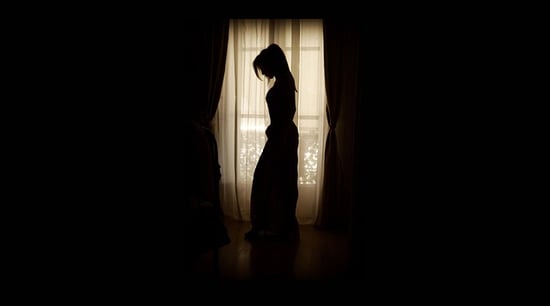
Imagine a world where women are fighting for unprecedented rights, the economic climate is unpredictable, and new developments in technology are made every year. While this world might sound like the present day, it also describes America in the 1890s .
It was in this world that author Kate Chopin wrote and lived, and many of the issues of the period are reflected in her short story, “The Story of an Hour.” Now, over a century later, the story remains one of Kate Chopin’s most well-known works and continues to shed light on the internal struggle of women who have been denied autonomy.
In this guide to Kate Chopin’s “The Story of an Hour,” we’ll discuss:
- A brief history of Kate Chopin and America the 1890s
- “The Story of an Hour” summary
- Analysis of the key story elements in “The Story of an Hour,” including themes, characters, and symbols
By the end of this article, you’ll have an expert grasp on Kate Chopin’s “The Story of an Hour.” So let’s get started!
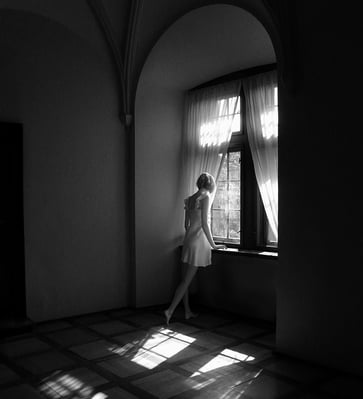
“The Story of an Hour” Summary
If it’s been a little while since you’ve read Kate Chopin’s “The Story of an Hour,” it can be hard to remember the important details. This section includes a quick recap, but you can find “The Story of an Hour” PDF and full version here . We recommend you read it again before diving into our analyses in the next section!
For those who just need a refresher, here’s “The Story of an Hour” summary:
Mrs. Louise Mallard is at home when her sister, Josephine, and her husband’s friend, Richards, come to tell her that her husband, Brently Mallard, has been killed in a railroad accident . Richards had been at the newspaper office when the news broke, and he takes Josephine with him to break the news to Louise since they’re afraid of aggravating her heart condition. Upon hearing the news of her husband’s death, Louise is grief-stricken, locks herself in her room, and weeps.
From here, the story shifts in tone. As Louise processes the news of her husband’s death, she realizes something wonderful and terrible at the same time: she is free . At first she’s scared to admit it, but Louise quickly finds peace and joy in her admission. She realizes that, although she will be sad about her husband (“she had loved him—sometimes,” Chopin writes), Louise is excited for the opportunity to live for herself. She keeps repeating the word “free” as she comes to terms with what her husband’s death means for her life.
In the meantime, Josephine sits at Louise’s door, coaxing her to come out because she is worried about Louise’s heart condition. After praying that her life is long-lived, Louise agrees to come out. However, as she comes downstairs, the front door opens to reveal her husband, who had not been killed by the accident at all. Although Richards tries to keep Louise’s heart from shock by shielding her husband from view, Louise dies suddenly, which the doctors later attribute to “heart disease—of the joy that kills .”
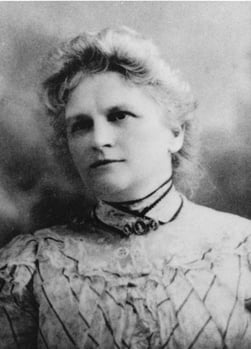
Kate Chopin, the author of "The Story of an Hour," has become one of the most important American writers of the 19th century.
The History of Kate Chopin and the 1890s
Before we move into “The Story of an Hour” analysis section, it’s helpful to know a little bit about Kate Chopin and the world she lived in.
A Short Biography of Kate Chopin
Born in 1850 to wealthy Catholic parents in St. Louis, Missouri, Kate Chopin (originally Kate O’Flaherty) knew hardship from an early age. In 1855, Chopin lost her father, Thomas, when he passed away in a tragic and unexpected railroad accident. The events of this loss would stay with Kate for the rest of her life, eventually becoming the basis for “The Story of an Hour” nearly forty years later.
Chopin was well-educated throughout her childhood , reading voraciously and becoming fluent in French. Chopin was also very aware of the divide between the powerful and the oppressed in society at the time . She grew up during the U.S. Civil War, so she had first-hand knowledge of violence and slavery in the United States.
Chopin was also exposed to non-traditional roles for women through her familial situation. Her mother, grandmother, and great-grandmother chose to remain widows (rather than remarry) after their husbands died. Consequently, Chopin learned how important women’s independence could be, and that idea would permeate much of her writing later on.
As Chopin grew older, she became known for her beauty and congeniality by society in St. Louis. She was married at the age of nineteen to Oscar Chopin, who came from a wealthy cotton-growing family. The couple moved to New Orleans, where they would start both a general store and a large family. (Chopin would give birth to seven children over the next nine years!)
While Oscar adored his wife, he was less capable of running a business. Financial trouble forced the family to move around rural Louisiana. Unfortunately, Oscar would die of swamp fever in 1882 , leaving Chopin in heavy debt and with the responsibility of managing the family’s struggling businesses.
After trying her hand at managing the property for a year, Chopin conceded to her mother’s requests to return with her children to St. Louis. Chopin’s mother died the year after. In order to support herself and her children, Kate began to write to support her family.
Luckily, Chopin found immediate success as a writer. Many of her short stories and novels—including her most famous novel, The Awakening— dealt with life in Louisiana . She was also known as a fast and prolific writer, and by the end of the 1900s she had written over 100 stories, articles, and essays.
Unfortunately, Chopin would pass away from a suspected cerebral hemorrhage in 1904, at the age of 54 . But Kate Chopin’s “The Story of an Hour” and other writings have withstood the test of time. Her work has lived on, and she’s now recognized as one of the most important American writers of the 19th century.
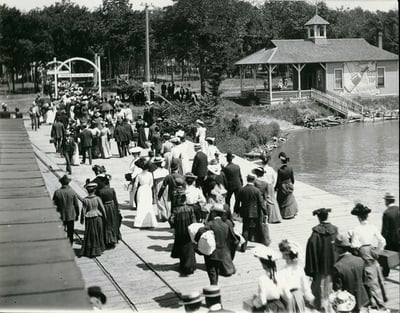
American life was undergoing significant change in the 19th century. Technology, culture, and even leisure activities were changing.
American Life in the 1890s
“The Story of an Hour” was written and published in 1894, right as the 1800s were coming to a close. As the world moved into the new century, American life was also changing rapidly.
For instance, t he workplace was changing drastically in the 1890s . Gone were the days where most people were expected to work at a trade or on a farm. Factory jobs brought on by industrialization made work more efficient, and many of these factory owners gradually implemented more humane treatment of their workers, giving them more leisure time than ever.
Though the country was in an economic recession at this time, technological changes like electric lighting and the popularization of radios bettered the daily lives of many people and allowed for the creation of new jobs. Notably, however, work was different for women . Working women as a whole were looked down upon by society, no matter why they found themselves in need of a job.
Women who worked while they were married or pregnant were judged even more harshly. Women of Kate Chopin’s social rank were expected to not work at all , sometimes even delegating the responsibility of managing the house or child-rearing to maids or nannies. In the 1890s, working was only for lower class women who could not afford a life of leisure .
In reaction to this, the National American Woman Suffrage Association was created in 1890, which fought for women’s social and political rights. While Kate Chopin was not a formal member of the suffragette movements, she did believe that women should have greater freedoms as individuals and often talked about these ideas in her works, including in “The Story of an Hour.”
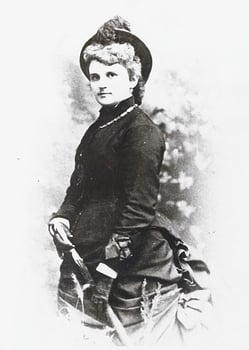
Kate Chopin's "The Story of an Hour" a short exploration of marriage and repression in America.
“The Story of an Hour” Analysis
Now that you have some important background information, it’s time to start analyzing “The Story of an Hour.”
This short story is filled with opposing forces . The themes, characters, and even symbols in the story are often equal, but opposite, of one another. Within “The Story of an Hour,” analysis of all of these elements reveals a deeper meaning.
“The Story of an Hour” Themes
A theme is a message explored in a piece of literature. Most stories have multiple themes, which is certainly the case in “The Story of an Hour.” Even though Chopin’s story is short, it discusses the thematic ideas of freedom, repression, and marriage.
Keep reading for a discussion of the importance of each theme!
Freedom and Repression
The most prevalent theme in Chopin’s story is the battle between freedom and “repression.” Simply put , repression happens when a person’s thoughts, feelings, or desires are being subdued. Repression can happen internally and externally. For example, if a person goes through a traumatic accident, they may (consciously or subconsciously) choose to repress the memory of the accident itself. Likewise, if a person has wants or needs that society finds unacceptable, society can work to repress that individual. Women in the 19th century were often victims of repression. They were supposed to be demure, gentle, and passive—which often went against women’s personal desires.
Given this, it becomes apparent that Louise Mallard is the victim of social repression. Until the moment of her husband’s supposed death, Louise does not feel free . In their marriage, Louise is repressed. Readers see this in the fact that Brently is moving around in the outside world, while Louise is confined to her home. Brently uses railroad transportation on his own, walks into his house of his own accord, and has individual possessions in the form of his briefcase and umbrella. Brently is even free from the knowledge of the train wreck upon his return home. Louise, on the other hand, is stuck at home by virtue of her position as a woman and her heart condition.
Here, Chopin draws a strong contrast between what it means to be free for men and women. While freedom is just part of what it means to be a man in America, freedom for women looks markedly different. Louise’s life is shaped by what society believes a woman should be and how a wife should behave. Once Louise’s husband “dies,” however, she sees a way where she can start claiming some of the more “masculine” freedoms for herself. Chopin shows how deeply important freedom is to the life of a woman when, in the end, it’s not the shock of her husband’s return of her husband that kills Louise, but rather the thought of losing her freedom again.
Marriage as a “The Story of an Hour” theme is more than just an idyllic life spent with a significant other. The Mallard’s marriage shows a reality of 1890s life that was familiar to many people. Marriage was a means of social control —that is to say, marriage helped keep women in check and secure men’s social and political power. While husbands were usually free to wander the world on their own, hold jobs, and make important family decisions, wives (at least those of the upper class) were expected to stay at home and be domestic.
Marriage in Louise Mallard’s case has very little love. She sees her marriage as a life-long bond in which she feels trapped, which readers see when she confesses that she loved her husband only “sometimes.” More to the point, she describes her marriage as a “powerful will bending hers in that blind persistence with which men and women believe they have a right to impose a private will upon a fellow-creature.” In other words, Louise Mallard feels injustice in the expectation that her life is dictated by the will of her husband.
Like the story, the marriages Kate witnessed often ended in an early or unexpected death. The women of her family, including Kate herself, all survived their husbands and didn’t remarry. While history tells us that Kate Chopin was happy in her marriage, she was aware that many women weren’t. By showing a marriage that had been built on control and society’s expectations, Chopin’s “The Story of an Hour” highlights the need for a world that respected women as valuable partners in marriage as well as capable individuals.
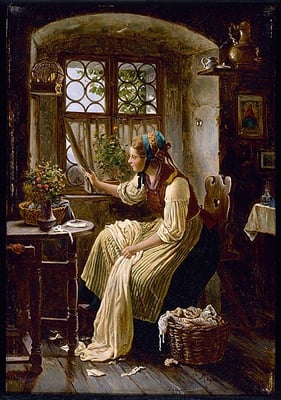
While this painting by Johann Georg Meyer wasn't specifically of Louise Mallard, "Young Woman Looking Through a Window" is a depiction of what Louise might have looked like as she realized her freedom.
"The Story of an Hour" Characters
The best stories have developed characters, which is the case in “The Story of an Hour,” too. Five characters make up the cast of “The Story of an Hour”:
Louise Mallard
Brently mallard.
- The doctor(s)
By exploring the details of each character, we can better understand their motivations, societal role, and purpose to the story.
From the opening sentence alone, we learn a lot about Louise Mallard. Chopin writes, “Knowing that Mrs. Mallard was afflicted with a heart trouble, great care was taken to break to her as gently as possible the news of her husband’s death.”
From that statement alone, we know that she is married, has a heart condition, and is likely to react strongly to bad news . We also know that the person who is sharing the bad news views Louise as delicate and sensitive. Throughout the next few paragraphs, we also learn that Louise is a housewife, which indicates that she would be part of the middle-to-upper class in the 1890s. Chopin also describes Louise’s appearance as “young,” “fair, calm face,” with lines of “strength.” These characteristics are not purely physical, but also bleed into her character throughout the story.
Louise’s personality is described as different from other women . While many women would be struck with the news in disbelief, Louise cries with “wild abandonment”—which shows how powerful her emotions are. Additionally, while other women would be content to mourn for longer, Louise quickly transitions from grief to joy about her husband’s passing.
Ultimately, Chopin uses Louise’s character to show readers what a woman’s typical experience within marriage was in the 1890s. She uses Louise to criticize the oppressive and repressive nature of marriage, especially when Louise rejoices in her newfound freedom.
Josephine is Louise’s sister . We never hear of Josephine’s last name or whether she is married or not. We do know that she has come with Richards, a friend of Brently’s, to break the news of his death to her sister.
When Josephine tells Louise the bad news, she’s only able to tell Louise of Brently’s death in “veiled hints,” rather than telling her outright. Readers can interpret this as Josephine’s attempt at sparing Louise’s feelings. Josephine is especially worried about her sister’s heart condition, which we see in greater detail later as she warns Louise, “You will make yourself ill.” When Louise locks herself in her room, Josephine is desperate to make sure her sister is okay and begs Louise to let her in.
Josephine is the key supporting character for Louise, helping her mourn, though she never knows that Louise found new freedom from her husband’s supposed death . But from Josephine’s actions and interactions with Louise, readers can accurately surmise that she cares for her sister (even if she’s unaware of how miserable Louise finds her life).
Richards is another supporting character, though he is described as Brently’s friend, not Louise’s friend. It is Richards who finds out about Brently Mallard’s supposed death while at the newspaper office—he sees Brently’s name “leading the list of ‘killed.’” Richards’ main role in “The Story of an Hour” is to kick off the story’s plot.
Additionally, Richard’s presence at the newspaper office suggests he’s a writer, editor, or otherwise employee of the newspaper (although Chopin leaves this to readers’ inferences). Richards takes enough care to double-check the news and to make sure that Brently’s likely dead. He also enlists Josephine’s help to break the news to Louise. He tries to get to Louise before a “less careful, less tender friend” can break the sad news to her, which suggests that he’s a thoughtful person in his own right.
It’s also important to note is that Richards is aware of Louise’s heart condition, meaning that he knows Louise Mallard well enough to know of her health and how she is likely to bear grief. He appears again in the story at the very end, when he tries (and fails) to shield Brently from his wife’s view to prevent her heart from reacting badly. While Richards is a background character in the narrative, he demonstrates a high level of friendship, consideration, and care for Louise.
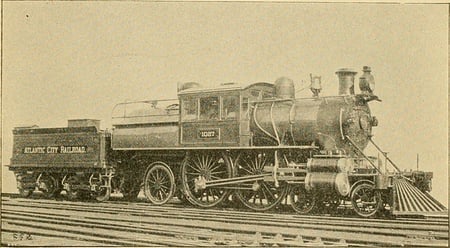
Brently Mallard would have been riding in a train like this one when the accident supposedly occurred.
Mr. Brently Mallard is the husband of the main character, Louise. We get few details about him, though readers do know he’s been on a train that has met with a serious accident. For the majority of the story, readers believe Brently Mallard is dead—though the end of “The Story of an Hour” reveals that he’s been alive all along. In fact, Brently doesn’t even know of the railroad tragedy when he arrives home “travel-stained.”
Immediately after Louise hears the news of his death, she remembers him fondly. She remarks on his “kind, tender hands” and says that Brently “never looked save with love” upon her . It’s not so much Brently as it’s her marriage to him which oppresses Louise. While he apparently always loved Louise, Louise only “sometimes” loved Brently. She constantly felt that he “impose[d] a private will” upon her, as most husbands do their wives. And while she realizes that Brently likely did so without malice, she also realized that “a kind intention or a cruel intention” makes the repression “no less a crime.”
Brently’s absence in the story does two things. First, it contrasts starkly with Louise’s life of illness and confinement. Second, Brently’s absence allows Louise to imagine a life of freedom outside of the confines of marriage , which gives her hope. In fact, when he appears alive and well (and dashes Louise’s hopes of freedom), she passes away.
The Doctor(s)
Though the mention of them is brief, the final sentence of the story is striking. Chopin writes, “When the doctors came they said she had died of heart disease—of the joy that kills.” Just as she had no freedom in life, her liberation from the death of her husband is told as a joy that killed her.
In life as in death, the truth of Louise Mallard is never known. Everything the readers know about her delight in her newfound freedom happens in Louise’s own mind; she never gets the chance to share her secret joy with anyone else.
Consequently, the ending of the story is double-sided. If the doctors are to be believed, Louise Mallard was happy to see her husband, and her heart betrayed her. And outwardly, no one has any reason to suspect otherwise. Her reaction is that of a dutiful, delicate wife who couldn’t bear the shock of her husband returned from the grave.
But readers can infer that Louise Mallard died of the grief of a freedom she never had , then found, then lost once more. Readers can interpret Louise’s death as her experience of true grief in the story—that for her ideal life, briefly realized then snatched away.

In "The Story of an Hour," the appearance of hearts symbolize both repression and hope.
“The Story of an Hour” Symbolism and Motifs
Symbols are any object, word, or other element that appear in the story and have additional meanings beyond. Motifs are elements from a story that gain meaning from being repeated throughout the narrative. The line between symbols and motifs is often hazy, but authors use both to help communicate their ideas and themes.
In “The Story of an Hour,” symbolism is everywhere, but the three major symbols present in the story are:
- The heart
- The house and the outdoors
- Joy and sorrow
Heart disease, referred to as a “heart condition” within the text, opens and closes the text. The disease is the initial cause for everyone’s concern, since Louise’s condition makes her delicate. Later, heart disease causes Louise’s death upon Brently’s safe return. In this case, Louise’s ailing heart has symbolic value because it suggests to readers that her life has left her heartbroken. When she believes she’s finally found freedom, Louise prays for a long life...when just the day before, she’d “had thought with a shudder that life might be long.”
As Louise realizes her freedom, it’s almost as if her heart sparks back to life. Chopin writes, “Now her bosom rose and fell tumultuously...she was striving to beat it back...Her pulses beat fast, and the coursing blood warmed and relaxed every inch of her body.” These words suggest that, with her newfound freedom, the symptoms of her heart disease have lifted. Readers can surmise that Louise’s diseased heart is the result of being repressed, and hope brings her heart back to life.
Unfortunately, when Brently comes back, so does Louise’s heart disease. And, although her death is attributed to joy, the return of her (both symbolic and literal) heart disease kills her in the end.
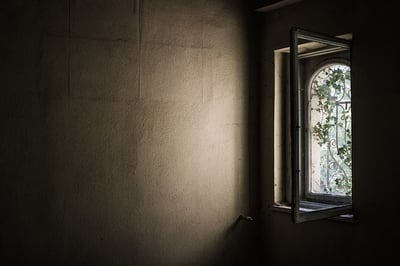
The House and the Outdoors
The second set of symbols are Louise’s house and the world she can see outside of her window. Chopin contrasts these two symbolic images to help readers better understand how marriage and repression have affected Louise.
First of all, Louise is confined to the home—both within the story and in general. For her, however, her home isn’t a place to relax and feel comfortable. It’s more like a prison cell. All of the descriptions of the house reinforce the idea that it’s closed off and inescapable . For instance, the front door is locked when Mr. Mallard returns home. When Mrs. Mallard is overcome with grief, she goes deeper inside her house and locks herself in her room.
In that room, however, Mrs. Mallard takes note of the outdoors by looking out of her window. Even in her momentary grief, she describes the “open square before her house” and “the new spring life.” The outdoors symbolize freedom in the story, so it’s no surprise that she realizes her newfound freedom as she looks out her window. Everything about the outside is free, beautiful, open, inviting, and pleasant...a stark contrast from the sadness inside the house .
The house and its differences from outdoors serve as one of many symbols for how Louise feels about her marriage: barred from a world of independence.
Joy and Sorrow
Finally, joy and sorrow are motifs that come at unexpected times throughout “The Story of an Hour.” Chopin juxtaposes joy and sorrow to highlight how tragedy releases Louise from her sorrow and gives her a joyous hope for the future.
At first, sorrow appears as Louise mourns the death of her husband. Yet, in just a few paragraphs, she finds joy in the event as she discovers a life of her own. Though Louise is able to see that feeling joy at such an event is “monstrous,” she continues to revel in her happiness.
It is later that, when others expect her to be joyful, Josephine lets out a “piercing cry,” and Louise dies. Doctors interpret this as “the joy that kills,” but more likely it’s a sorrow that kills. The reversal of the “appropriate” feelings at each event reveals how counterintuitive the “self-assertion which she suddenly recognized as the strongest impulse of her being” is to the surrounding culture. This paradox reveals something staggering about Louise’s married life: she is so unhappy with her situation that grief gives her hope...and she dies when that hope is taken away.

Key Takeaways: Kate Chopin's “The Story of an Hour”
Analyzing Chopin’s “The Story of an Hour” takes time and careful thought despite the shortness of the story. The story is open to multiple interpretations and has a lot to reveal about women in the 1890s, and many of the story’s themes, characters, and symbols critique women’s marriage roles during the period .
There’s a lot to dig through when it comes to “The Story of an Hour” analysis. If you’re feeling overwhelmed, just remember a few things :
- Events from Kate Chopin’s life and from social changes in the 1890s provided a strong basis for the story.
- Mrs. Louise Mallard’s heart condition, house, and feelings represent deeper meanings in the narrative.
- Louise goes from a state of repression, to freedom, and then back to repression, and the thought alone is enough to kill her.
Remembering the key plot points, themes, characters, and symbols will help you write any essay or participate in any discussion. Kate Chopin’s “The Story of an Hour” has much more to uncover, so read it again, ask questions, and start exploring the story beyond the page!

What’s Next?
You may have found your way to this article because analyzing literature can be tricky to master. But like any skill, you can improve with practice! First, make sure you have the right tools for the job by learning about literary elements. Start by mastering the 9 elements in every piece of literature , then dig into our element-specific guides (like this one on imagery and this one on personification .)
Another good way to start practicing your analytical skills is to read through additional expert guides like this one. Literary guides can help show you what to look for and explain why certain details are important. You can start with our analysis of Dylan Thomas’ poem, “Do not go gentle into that good night.” We also have longer guides on other words like The Great Gatsby and The Crucible , too.
If you’re preparing to take the AP Literature exam, it’s even more important that you’re able to quickly and accurately analyze a text . Don’t worry, though: we’ve got tons of helpful material for you. First, check out this overview of the AP Literature exam . Once you have a handle on the test, you can start practicing the multiple choice questions , and even take a few full-length practice tests . Oh, and make sure you’re ready for the essay portion of the test by checking out our AP Literature reading list!

Ashley Sufflé Robinson has a Ph.D. in 19th Century English Literature. As a content writer for PrepScholar, Ashley is passionate about giving college-bound students the in-depth information they need to get into the school of their dreams.
Student and Parent Forum
Our new student and parent forum, at ExpertHub.PrepScholar.com , allow you to interact with your peers and the PrepScholar staff. See how other students and parents are navigating high school, college, and the college admissions process. Ask questions; get answers.

Ask a Question Below
Have any questions about this article or other topics? Ask below and we'll reply!
Improve With Our Famous Guides
- For All Students
The 5 Strategies You Must Be Using to Improve 160+ SAT Points
How to Get a Perfect 1600, by a Perfect Scorer
Series: How to Get 800 on Each SAT Section:
Score 800 on SAT Math
Score 800 on SAT Reading
Score 800 on SAT Writing
Series: How to Get to 600 on Each SAT Section:
Score 600 on SAT Math
Score 600 on SAT Reading
Score 600 on SAT Writing
Free Complete Official SAT Practice Tests
What SAT Target Score Should You Be Aiming For?
15 Strategies to Improve Your SAT Essay
The 5 Strategies You Must Be Using to Improve 4+ ACT Points
How to Get a Perfect 36 ACT, by a Perfect Scorer
Series: How to Get 36 on Each ACT Section:
36 on ACT English
36 on ACT Math
36 on ACT Reading
36 on ACT Science
Series: How to Get to 24 on Each ACT Section:
24 on ACT English
24 on ACT Math
24 on ACT Reading
24 on ACT Science
What ACT target score should you be aiming for?
ACT Vocabulary You Must Know
ACT Writing: 15 Tips to Raise Your Essay Score
How to Get Into Harvard and the Ivy League
How to Get a Perfect 4.0 GPA
How to Write an Amazing College Essay
What Exactly Are Colleges Looking For?
Is the ACT easier than the SAT? A Comprehensive Guide
Should you retake your SAT or ACT?
When should you take the SAT or ACT?
Stay Informed
Get the latest articles and test prep tips!
Looking for Graduate School Test Prep?
Check out our top-rated graduate blogs here:
GRE Online Prep Blog
GMAT Online Prep Blog
TOEFL Online Prep Blog
Holly R. "I am absolutely overjoyed and cannot thank you enough for helping me!”

A Summary and Analysis of Kate Chopin’s ‘The Story of an Hour’
By Dr Oliver Tearle (Loughborough University)
Some short stories can say all they need to do in just a few pages, and Kate Chopin’s three-page 1894 story ‘The Story of an Hour’ (sometimes known as ‘The Dream of an Hour’) is a classic example. Yet those three pages remain tantalisingly ambiguous, perhaps because so little is said, so much merely hinted at. Yet Chopin’s short story is, upon closer inspection, a subtle, studied analysis of death, marriage, and personal wishes.
Written in April 1894 and originally published in Vogue in December of that year, the story focuses on an hour in the life of a married woman who has just learnt that her husband has apparently died.
‘The Story of an Hour’: plot summary
What happens in that brief hour, that story of an hour? A married woman, Mrs Louise Mallard, who has heart trouble, learns that her husband has died in a railroad accident.
Her sister Josephine breaks the news to her; it was her husband’s friend Richards who first heard about the railroad disaster and saw her husband’s name, Brently Mallard, at the top of the list of fatalities. Her first reaction is to weep at the news that her husband is dead; she then takes herself off to her room to be alone.
She sinks into an armchair and finds herself attuned to a series of sensations: the trees outside the window ‘aquiver with the new spring life’, the ‘breath of rain’ in the air; the sound of a peddler crying his wares in the street below. She finds herself going into a sort of trancelike daze, a ‘suspension of intelligent thought’.
Then, gradually, a feeling begins to form within her: a sense of freedom. Now her husband is dead, it seems, she feels free. She dreads seeing her husband’s face (as she knows she must, when she goes to identify the body), but she knows that beyond that lie years and years of her life yet to be lived, and ‘would all belong to her absolutely’.
She reflects that she had loved her husband – sometimes. Sometimes she hadn’t. But now, that didn’t matter: what matters is the ‘self-assertion’, the declaration of independence, that her life alone represents a new start.
But then, her sister Josephine calls from outside the door for her to come out, worried that Louise is making herself ill. But Louise doesn’t feel ill: she feels on top of the world. She used to dread the prospect of living to a ripe old age, but now she welcomes such a prospect. Eventually she opens the door and she and Josephine go back downstairs.
Richards is still down there, waiting for them. Then, there’s a key in the front door and who should enter but … Mrs Mallard’s husband, Brently Mallard.
It turns out he was nowhere near the scene of the railroad accident, and is unharmed! Mrs Mallard is so shocked at his return that she dies, partly because of her heart disease but also, so ‘they’ said, from the unexpected ‘joy’ of her husband’s return.
‘The Story of an Hour’: analysis
In some ways, ‘The Story of an Hour’ prefigures a later story like D. H. Lawrence’s ‘ Odour of Chrysanthemums ’ (1911), which also features a female protagonist whose partner’s death makes her reassess her life with him and to contemplate the complex responses his death has aroused in her.
However, in Lawrence’s story the husband really has died (in a mining accident), whereas in ‘The Story of an Hour’, we find out at the end of the story that Mr Mallard was not involved in the railroad accident and is alive and well. In a shock twist, it is his wife who dies, upon learning that he is still alive.
What should we make of this ‘dream of an hour’? That alternative title is significant, not least because of the ambiguity surrounding the word ‘dream’. Is Louise so plunged into shock by the news of her husband’s apparent death that she begins to hallucinate that she would be better off without him? Is this her way of coping with traumatic news – to try to look for the silver lining in a very black cloud? Or should we analyse ‘dream’ as a sign that she entertains aspirations and ambitions, now her husband is out of the way?
‘The Dream of an Hour’ perhaps inevitably puts us in mind of Kate Chopin’s most famous story, the short novel The Awakening (1899), whose title reflects its female protagonist Edna Pontellier’s growing awareness that there is more to life than her wifely existence.
But Louisa Mallard’s ‘awakening’ remains a dream; when she awakes from it, upon learning that her husband is still alive and all her fancies about her future life have been in vain, she dies.
‘The Story of an Hour’ and modernism
‘The Story of an Hour’ is an early example of the impressionistic method of storytelling which was also being developed by Anton Chekhov around the same time as Chopin, and which would later be used by modernists such as Katherine Mansfield, James Joyce, and Virginia Woolf.
Although the story uses an omniscient third-person narrator, we are shown things from particular character perspectives in a way that reflects their own confusions and erratic thoughts – chiefly, of course, Louisa Mallard’s own.
But this impressionistic style – which is more interested in patterns of thought, daydreaming, and emotional responses to the world than in tightly structured plots – continues right until the end of the story.
Consider the final sentence of the story: ‘When the doctors came they said she had died of heart disease – of joy that kills.’ The irony, of course, is that Louisa appears to have accepted her husband’s death and to have taken his demise as a chance to liberate herself from an oppressive marriage (note Chopin’s reference to the lines on her face which ‘bespoke repression and even a certain strength’ – what did she need that strength for, we wonder?).
So it was not joy but disappointment, if anything, that brought on the heart attack that killed her. But the (presumably male) doctors who attended her death would not have assumed any such thing: they would have analysed her death as a result of her love for her husband, and the sheer joy she felt at having him back.
Chopin’s story also foreshadows Katherine Mansfield’s ‘The Garden Party’ , and Laura Sheridan’s enigmatic emotional reaction to seeing her first dead body (as with Chopin’s story, a man who has died in an accident). If you enjoyed this analysis of ‘The Story of an Hour’, you might also enjoy Anton Chekhov’s 1900 story ‘At Christmas Time’, to which Chopin’s story has been compared.
Leave a Reply Cancel reply
Discover more from interesting literature.
Subscribe now to keep reading and get access to the full archive.
Continue reading

Questions Answers from The Story of an Hour by Kate Chopin
Compound questions and answers from the story of an hour by kate chopin, questions and answers from the story of an hour.

Long Questions and Answers
You might like, contact form.
The Story of an Hour

21 pages • 42 minutes read
A modern alternative to SparkNotes and CliffsNotes, SuperSummary offers high-quality Study Guides with detailed chapter summaries and analysis of major themes, characters, and more.
Story Analysis
Character Analysis
Symbols & Motifs
Literary Devices
Important Quotes
Essay Topics
Discussion Questions
Discussion Questions Beta
Use the dropdowns below to tailor your questions by title, pre- or post-reading status, topic, and the difficulty level that suits your audience. Click "Generate," and that's it! Your set of ready-to-discuss questions will populate in seconds.
Select and customize your discussion questions!
Your Discussion Questions
Your results will show here.
Inspired by SuperSummary, powered by AI.
Our AI tools are evolving, sometimes exhibiting inaccuracies or biases that don't align with our principles. Discover how AI and expert content drive our innovative tools. Read more
Related Titles
By Kate Chopin

A Pair of Silk Stockings
Kate Chopin

A Respectable Woman
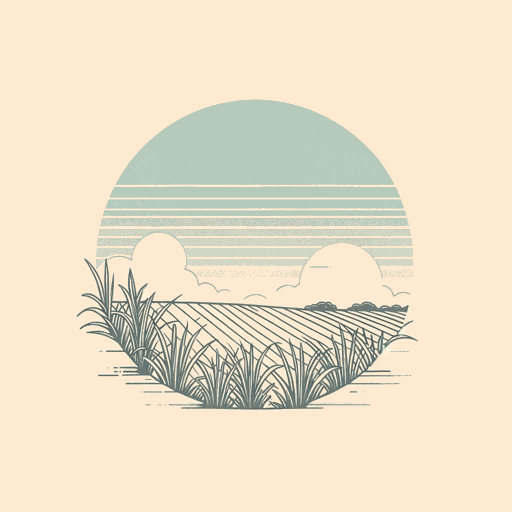
At the ’Cadian Ball

Desiree's Baby

The Awakening
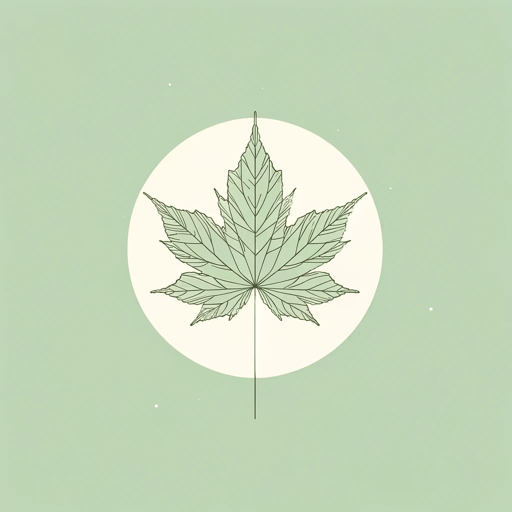
The Night Came Slowly

Featured Collections
Allegories of Modern Life
View Collection
Feminist Reads
Fiction with Strong Female Protagonists
Required Reading Lists
School Book List Titles
Home | Literary Movements | Timeline | American Authors | American Literature Sites
Reading and discussion questions on kate chopin's "the story of an hour".
1. What is the nature of Mrs. Mallard's "heart trouble," and why would the author mention it in the first paragraph? Is there any way in which this might be considered symbolic or ironic?
2. The setting of the story is very limited; it is confined largely to a room, a staircase, and a front door. How does this limitation help to express the themes of the story?
3. In what ways is this passage significant? "She could see in the open square before her house the tops of trees that were all aquiver with the new spring life. The delicious breath of rain was in the air. In the street below a peddler was crying his wares. The notes of a distant song which some one was singing reached her faintly, and countless sparrows were twittering in the eaves." What kinds of sensory images does this passage contain, and what senses does it address? What does the vision through the open window mean to her? Where else does she taste, smell, or touch something intangible in the story?
4. What kind of relationships do the Mallards have? Is Brently Mallard unkind to Louise Mallard, or is there some other reason for her saying "free, free, free!" when she hears of his death? How does she feel about him?
5. Mrs. Mallard closes the door to her room so that her sister Josephine cannot get in, yet she leaves the window open. Why does Chopin make a point of telling the reader this? How might this relate to the idea of being "free" and to the implicit idea that she is somehow imprisoned? Do other words in the story relate to this idea?
6. What does Josephine represent in the story? What does Richards represent?
7. Mrs. Mallard is described as descending the stairs "like a goddess of Victory." In what ways does she feel herself victorious?
8. The last line of the story is this: "When the doctors came they said she had died of heart disease-of joy that kills." In what ways is this an ironic statement? What is gained by having the doctors make such a statement rather than putting it in the mouths of Josephine or Richards?
9. What view of marriage does the story present? The story was published in 1894; does it only represent attitudes toward marriage in the nineteenth century, or could it equally apply to attitudes about marriage today?
10. If this is, in some sense, a story about a symbolic journey, where does Mrs. Mallard "travel"?
See also the Online Study Text of this story at VCU
Easy Insightful Literature Notes
The Story of an Hour Summary & Analysis
The story line / plot summary.
‘The Story of an Hour’ written by Kate Chopin in 1894 is about the tragic event or events that happened with Mrs. Louise Mallard one day.
The story starts with the news that Mr. Brently Mallard has died in a railroad accident. Richards, Mr. Mallard’s friend, is first to hear this shocking news and he informed the Mallard family immediately. Mrs. Louise Mallard has heart disease, so great care is taken in informing Mrs. Mallard about her husband’s death.
Josephine, Louise’s sister, takes the responsibility to break the horrible news to her. She says in broken sentences, the truth veiled in concealment. At once Mrs. Mallard breaks down completely. She goes wild with grief. When the storm of grief has subsided, she locks herself in her bedroom.
Sitting on an armchair near the open window of her room, she looks at the blue sky, physically exhausted. The spring air smells of upcoming rain, of fresh greenery and flowers. She can hear a distant voice singing a song, countless sparrows twittering madly somewhere.
Mrs. Mallard is now motionless in the chair with periodic sobs in between. She was quite young with a calm face. But now there’s a steeliness in her stare. But her gaze isn’t of reflection, there is no sign of intelligence and knowledge in that gaze. She goes quite still and waits with fear for what is coming for her. But she doesn’t know what exactly is coming her way.
Her bosom rises and falls tumultuously. She struggles to keep herself free from the clutches of whatever is trying to drown her. She fights and wins. In her semi-conscious state, she keeps whispering the word “free!” repeatedly. The fear and vacant expression is replaced by a calm, bright and keen expression. ‘At last I’m free’ is her first thought. She thinks that her husband, though kind, never really loved her. She felt suffocated and hopeless with him, not loved and cherished. But now that he’s dead, she can be free. ‘Free soul! Free body!’ are her exact words.
Josephine was kneeling outside Louise’s door, begging her sister to open the door. Louise screams that she’s fine and asks her not to worry for her. Her imagination has taken her on a riot. She was imagining herself during summer, winter, spring and in all the seasons alone, enjoying herself, without any restrictions or sadness.
All of a sudden, she rises and opens the door and walks down the stairs, hand in hand with her sister. But when she reaches the bottom stair, someone opens the door with a latch key. On the threshold stood Mr. Mallard, travel-stained and calmly carrying his umbrella and grip-sack. It is known that he was quite far from the place where the accident had taken place. In fact, he didn’t know there had been an accident at all, let alone that someone had put his name in the dead men’s list.
Then everything happens quite fast; Richard tries to shield Mr. Mallard from Mrs. Mallard’s view but it is too late. The shock of seeing him again kills Louise at once. When the doctors come, they say she died due to her heart disease.
The Story of an Hour: A Commentary on the Story
‘The story of an hour’, as the title suggests, is really a story of an hour of Mrs. Mallard’s life. It’s written in third person narrative technique from an unknown narrator’s perspective. The writing style is quite simple but intriguing as well. The author has done a great job in describing Mrs. Mallard’s despair and then her happiness. The story flow is quite smooth; nothing seems forced or unnatural.
The story starts with the news of Mr. Mallard’s death. The description is quite simple and can make the reader quite curious at the same time. The main concern of the story has been the character of Mrs. Mallard and the purging of her heart by the sad news. At first, upon hearing the news of her husband’s death, she went wild with grief but later came up quite happy to be free from all bondage — from the confinement of marriage. She has come out as a self-asserting and confident woman ahead of her time.
Mrs. Mallard was apparently never loved by her husband and was trapped in a loveless marriage. The event of her husband’s death prompted a kind of rebirth for her. And through this story, the author presents the social themes like male domination in society, and loveless, unsuccessful marriages. The position of women in the society is under the author’s scanner. It has been almost an identity crisis for Louise, which she feels she finds back after her husband’s death. That is why the unexpected return of her husband was so shocking for her.
We serve cookies on this site to offer, protect and improve our services. KNOW MORE OK
The Story of An Hour Questions & Answers
Hi Everyone!! This article will share The Story of An Hour Questions & Answers. In my previous posts, I have shared the questions and answers of The Tenant , Huck Meets The Duke and The King , The Luncheon and The Further Vision so, you can check these posts as well.
The Story of An Hour Questions & Answers
Word galaxy.
- Afflicted – to cause pain
- Veiled – disguised
- Elixir – a mythical concoction that can prolong life indefinitely
- Importunities – desire, wish
Question 1: Who are Josephine and Richard? Describe how each of them demonstrates concern for Mrs Mallard?
Answer: Josephine is Mrs Mallard’s sister and Richard is her husband’s friend. They both knew that Mrs Mallard was afflicted with a heart trouble so they took care in breaking the news of her husband’s accidental death to her. Mr Richard even went ahead to confirm the correctness of the news by a second telegram and only then went ahead to reveal it.
Question 2: How did Mrs Mallard react to the news of her husband’s death?
Answer: Mrs Mallard did not hear the news as many women would have heard the same, with a paralyzed inability to accept its significance. She wept at once, with sudden, wild abandonment, in her sister’s arms. When the storm of grief had spent itself, she went to her room alone.
Question 3: How did Mrs Mallard view her marriage? Justify it with references from the text.
Answer: Mrs Mallard views her marriage as an oppressive one. Although it had signs of kindness it was inherently oppressive. We can say this as she is aware that she would weep at the sight of her husband’s dead body but at the same time she opens her arms to welcome the independence she feels by uttering the words free! free! free!
Question 4: Describe what Mrs Mallard saw and experienced as she sank in the armchair by the open window.
Answer: She could see in the open square before her house the tops of trees, all quivering with the new spring life. In the street below a peddler was crying his wares. The notes of a distant song which someone was singing reached her faintly, countless sparrows were twittering in the eaves. Patches of blue sky showed here and there through the clouds that met and piled one above the other. She sat with her head thrown back upon the cushion of the chair, quite motionless, except when a sob came up her throat and shook her. There was a dull stare in her eyes, whose gaze was fixed away in the sky. In the bitter moment she could feel a long procession of years to come that would belong to her absolutely. And she opened and spread her arms out to them in welcome.
Question 5: She breathed a quick prayer that life might be long. It was only yesterday she had thought with a shudder that life might be long—Explain these lines.
Answer: These lines appear close to the end of the story just before Louise could leave her bedroom to go back downstairs. Before Mr Brently’s death Louise viewed her life with nervousness and anxiety trying to recollect the dull years of dependence and oppression. Now however she feels free and independent and that her life is worth living. She once hoped that her married life be short, but now she prays for a long, happy life. Other than showing how Louise feels about her independence, these lines also highlight the unexpectedness of Louise’s reaction. Rather than dread a life to be lived alone without a partner by her side, she rejoices the solitude and anticipates the future eagerly. When he husband Mr. Brently returns, she dies, unable to face the return of the life that she’d dreaded so much.
Question 6: Choose the correct option:
(a) from what ailment does mrs mallard suffer.
i. detached retinas ii. kidney failure iii. heart trouble iv. H1N1
(b) What might Mrs Mallard’s ailment symbolize?
i. her unhappiness and troubling emotions. ii. her inability to see things as they are. iii. a raging desire for food. iv. her inability to filter out less important things in life.
(c) Who breaks the news of Mr Mallard’s death?
i. Roberts ii. Friar John iii. Richards iv. Josephine
(d) What is significant about the story’s setting?
i. It takes place in a large house. ii. The story is set in a time period that afforded women very few rights. iii. The setting makes no difference. iv. The story encompasses one hour.
(e) How could we best characterize Brently Mallard
i. He is a typical husband in the late 19 th century. ii. He is a lazy husband. iii. He likes his job. iv. He set up the train wreck story. So, these were The Story of an Hour Questions & Answers.
Share this:
- Click to share on Twitter (Opens in new window)
- Click to share on Facebook (Opens in new window)
- Click to share on Pinterest (Opens in new window)
- Click to share on WhatsApp (Opens in new window)

IMAGES
VIDEO
COMMENTS
The Story of an Hour Questions and Answers - Discover the eNotes.com community of teachers, mentors and students just like you that can answer any question you might have on The Story of an Hour.
The last line of the story ends on an ominous note as Chopin describes Louise's heart disease as "a joy that kills.". While the characters in the story may believe that the joy of her husband's return caused her death, readers can infer that the loss of joy is ultimately to blame. Brently's return means the end of the freedom that she ...
Teach The Story of An Hour, with ideas from this resource guide, including discussion questions, character analysis, literary devices, themes, etymology, and historical context of Chopin's iconic work and the emergence of the modern feminist literary movement. Our goal is to help you help your students to better understand AND ENJOY classic literature!
The main idea of "The Story of An Hour" is freedom and its importance for an individual. Louise Mallard is happily married and has a very loving husband. However, she does not have freedom which she only gets after she comes to know that her husband is dead. And when he turns out to be alive, she dies of grief.
After her initial sobs of grief subside, Louise escapes into her bedroom and locks the door. She refuses to let Josephine or Richards follow her. Alone, she falls into a chair placed before an open window. Absolutely drained by her own anguish and haunted by exhaustion, she rests in the chair and looks out the window.
Mrs. Mallard feels even more swept up by the idea of freedom than the fact that she had felt love for her husband. She focuses on how liberated she feels. Outside the locked door to the room, her sister Josephine is pleading to her to open up and let her in. Mrs. Mallard tells her to go away and fantasizes about the exciting life ahead.
Full Plot Analysis. As the brief nature of the story suggests, "The Story of an Hour" explores the sudden struggle that Louise Mallard faces as she reaches a major turning point in her life. The possibilities that exist in a world without her husband captivate her, but she also experiences guilt regarding the relief she feels after hearing ...
In 1984, PBS aired a film adaptation of "The Story of an Hour.". The film was called "The Joy that Kills," taken from the story's last line, and was written by Tina Rathborne and Nancy Dyer. The best study guide to The Story of an Hour on the planet, from the creators of SparkNotes. Get the summaries, analysis, and quotes you need.
First published in 1894, "The Story of an Hour" by Kate Chopin is a poignant and thought-provoking short story. Set in the late 19th century, the narrative follows Louise Mallard, a woman with a heart condition, who receives the news of her husband's death in a railroad accident. Initially overwhelmed by grief, Louise's emotional ...
The sights and sounds of spring and a new feeling she can't describe. The comfort of a crowd gathering to mourn her husband's death. A storm approaching that seems to symbolize her bleak future ahead. People going about their lives in the streets and a sense of isolation.
Analyzing Chopin's "The Story of an Hour" takes time and careful thought despite the shortness of the story. The story is open to multiple interpretations and has a lot to reveal about women in the 1890s, and many of the story's themes, characters, and symbols critique women's marriage roles during the period.
In some ways, 'The Story of an Hour' prefigures a later story like D. H. Lawrence's 'Odour of Chrysanthemums' (1911), which also features a female protagonist whose partner's death makes her reassess her life with him and to contemplate the complex responses his death has aroused in her. However, in Lawrence's story the husband really has died (in a mining accident), whereas in ...
The delicious breath of rain was in the air. In the street below a peddler was crying his wares. The notes of a distant song which some one was singing reached her faintly, and countless sparrows were twittering in the eaves." DO BOTH SIDES-----Page 1 of 2. "The Story of an Hour" Reading Interpretation Questions.
Questions and Answers from The Story of an Hour. 1. (a) With reference to the short story 'The Story of an Hour ascertain the reasons why Chopin withheld the first name of Mrs Mallard at the beginning of the story. Answer. Kate Chopin was a writer of the nineteenth century. Her works depict Victorian morals, ideologies as prevalent in society.
Thanks for exploring this SuperSummary Study Guide of "The Story of an Hour" by Kate Chopin. A modern alternative to SparkNotes and CliffsNotes, SuperSummary offers high-quality Study Guides with detailed chapter summaries and analysis of major themes, characters, and more.
1. What is the nature of Mrs. Mallard's "heart trouble," and why would the author mention it in the first paragraph? Is there any way in which this might be considered symbolic or ironic? 2. The setting of the story is very limited; it is confined largely to a room, a staircase, and a front door. How does this limitation help to express the ...
RECAP SUMMARY. The story starts off when Louise Mallard first learns about her husbands death. The news of him dying in a train accident shocks her and she starts to cry in her sisters arms. She then escapes to the tranquility of her room. Alone in her room Louise starts to think about what will happen next. She knows she is sad that die died ...
This study guide for Kate Chopin's The Story of an Hour offers summary and analysis on themes, symbols, and other literary devices found in the text. Explore Course Hero's library of literature materials, including documents and Q&A pairs. ... Course Hero, "The Story of an Hour Study Guide," May 17, 2019, accessed April 8, 2024, https://www ...
The Story Line / Plot Summary. 'The Story of an Hour' written by Kate Chopin in 1894 is about the tragic event or events that happened with Mrs. Louise Mallard one day. The story starts with the news that Mr. Brently Mallard has died in a railroad accident. Richards, Mr. Mallard's friend, is first to hear this shocking news and he ...
ii. The story is set in a time period that afforded women very few rights. iii. The setting makes no difference. iv. The story encompasses one hour. (e) How could we best characterize Brently Mallard. i. He is a typical husband in the late 19th century.